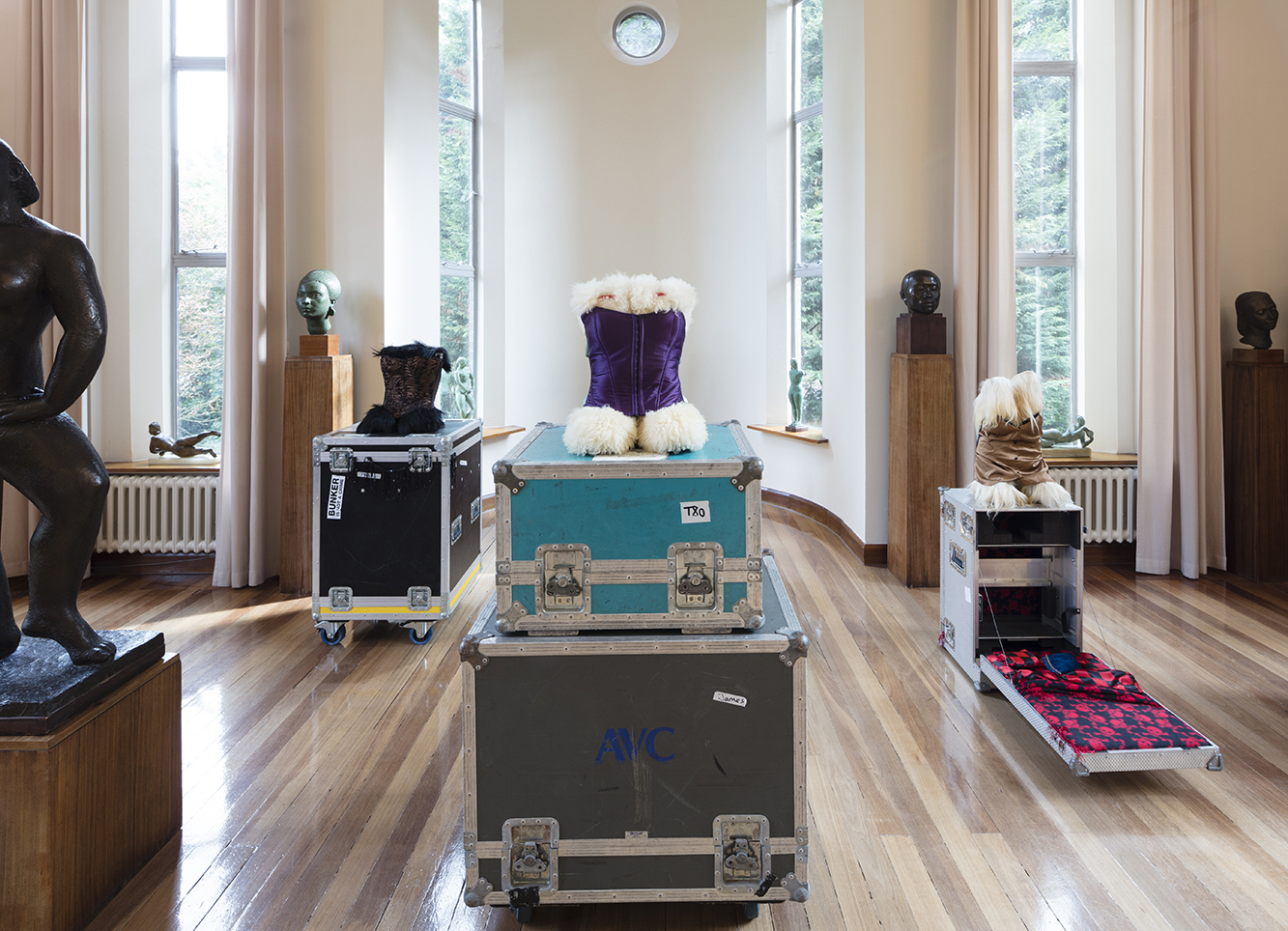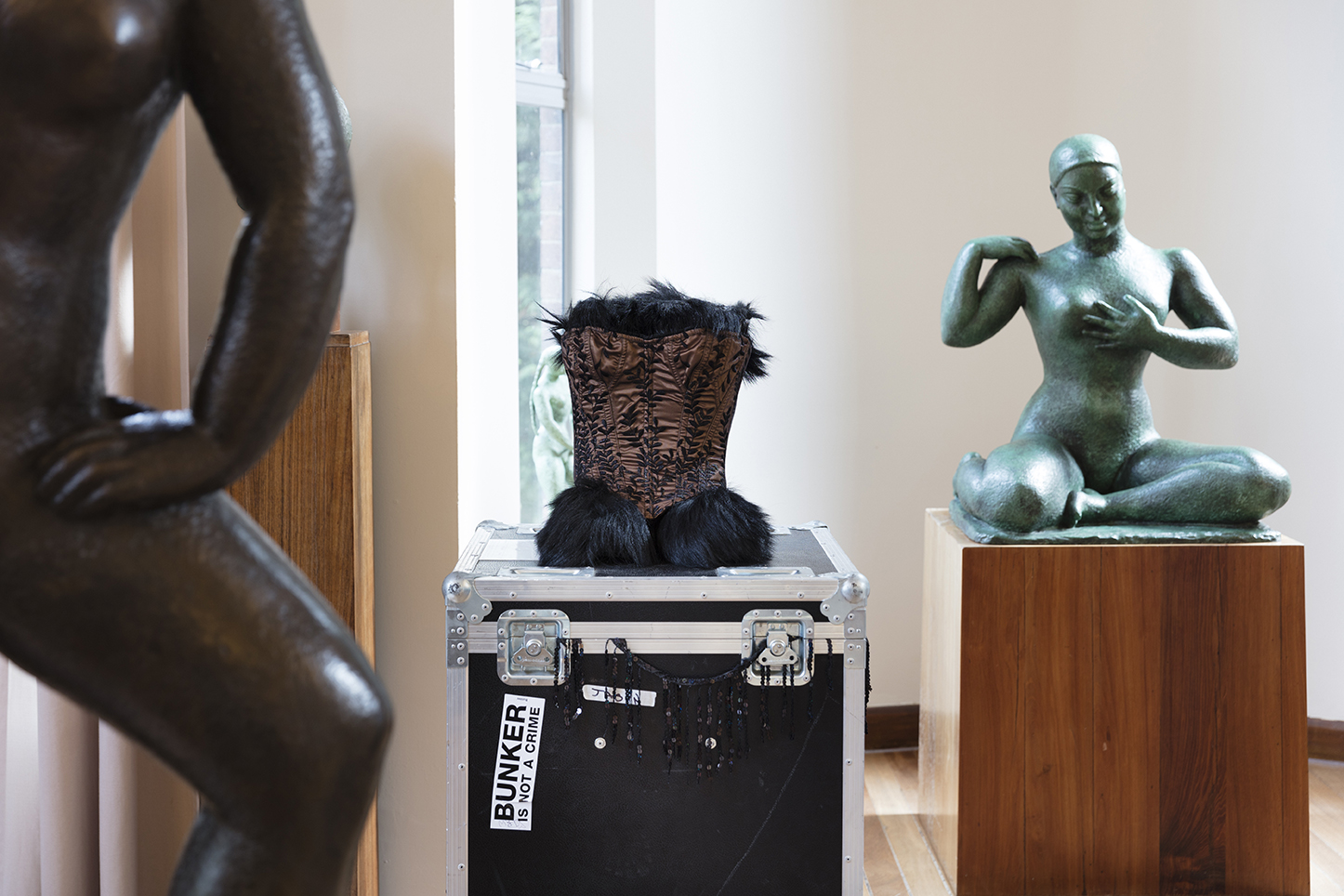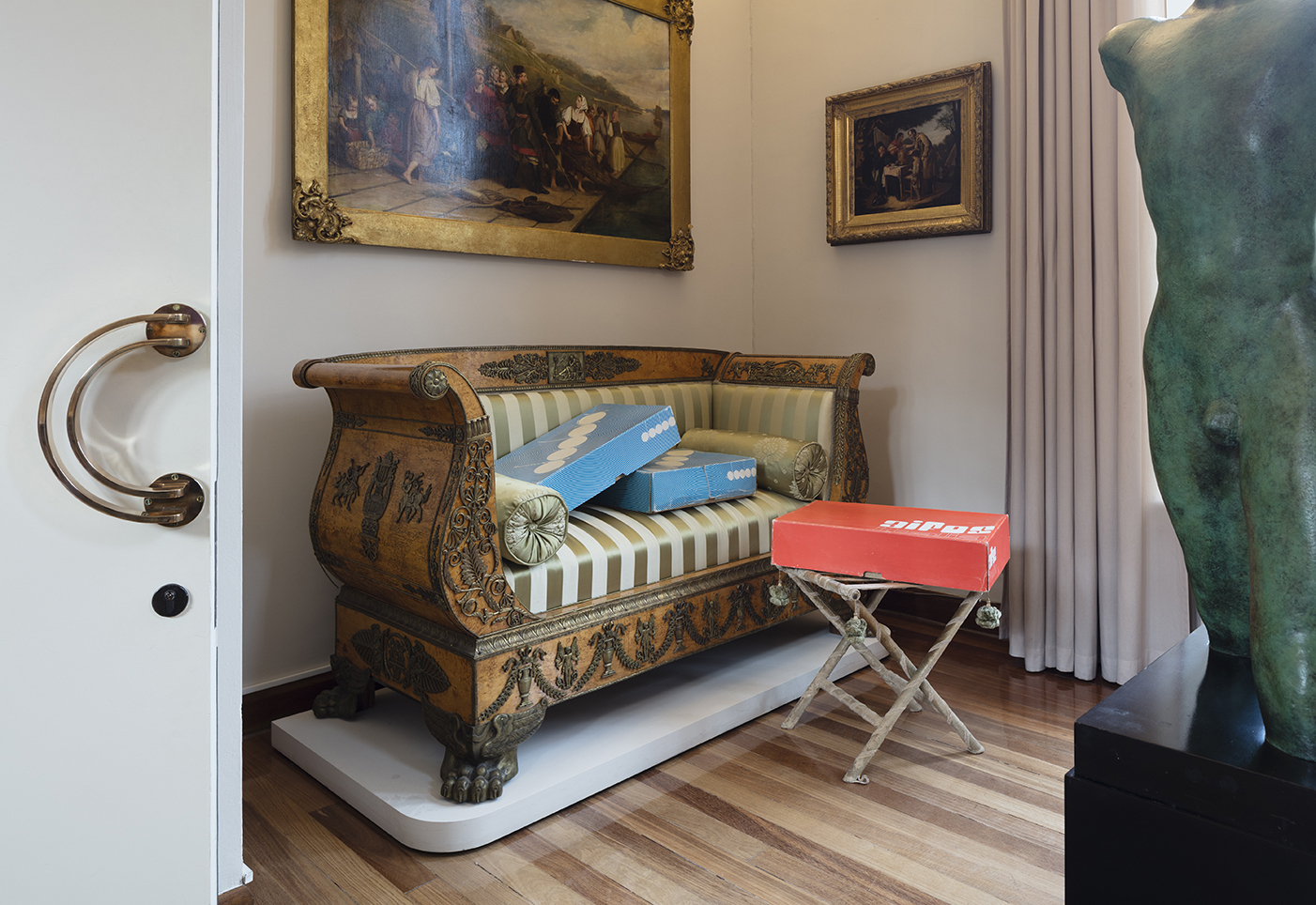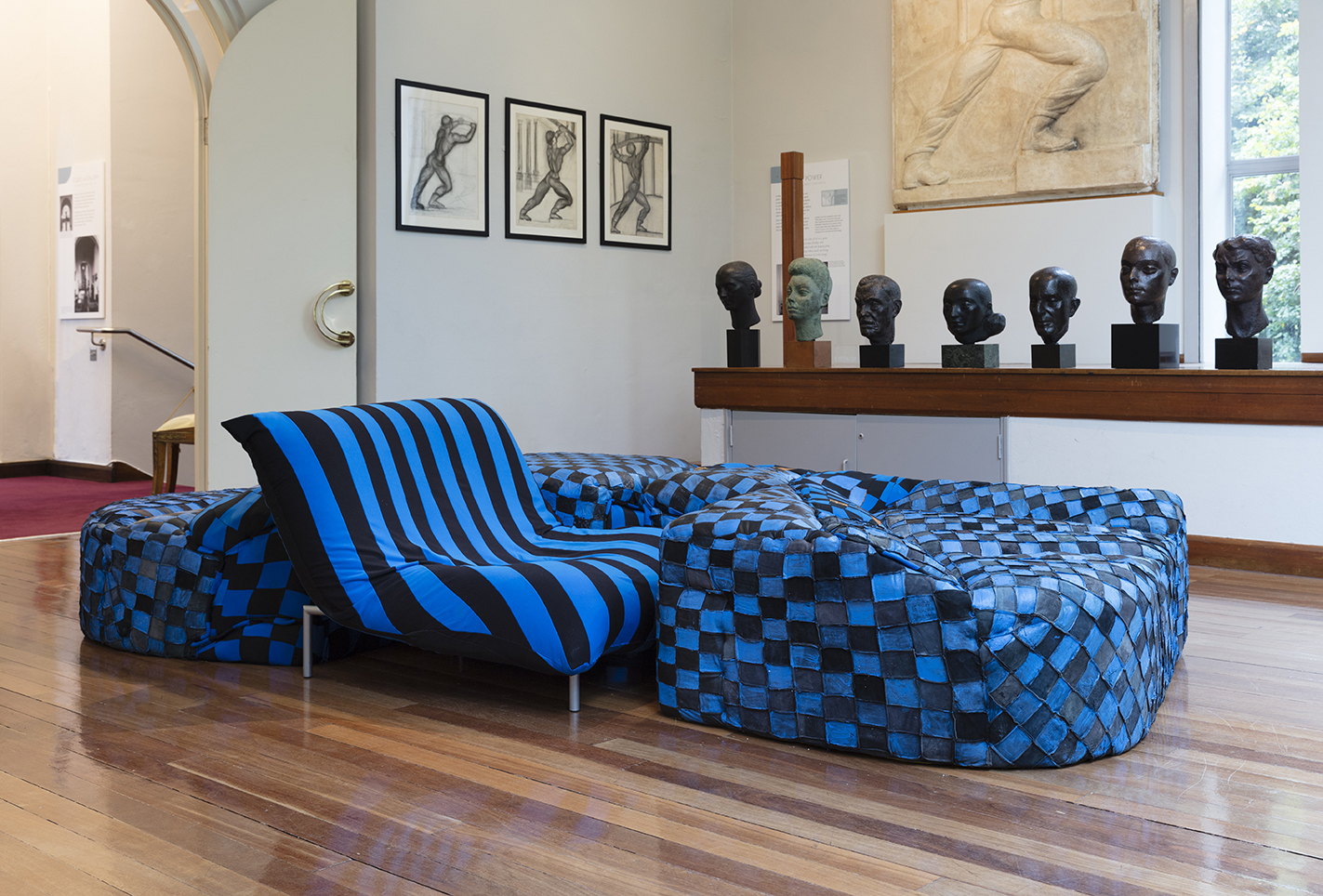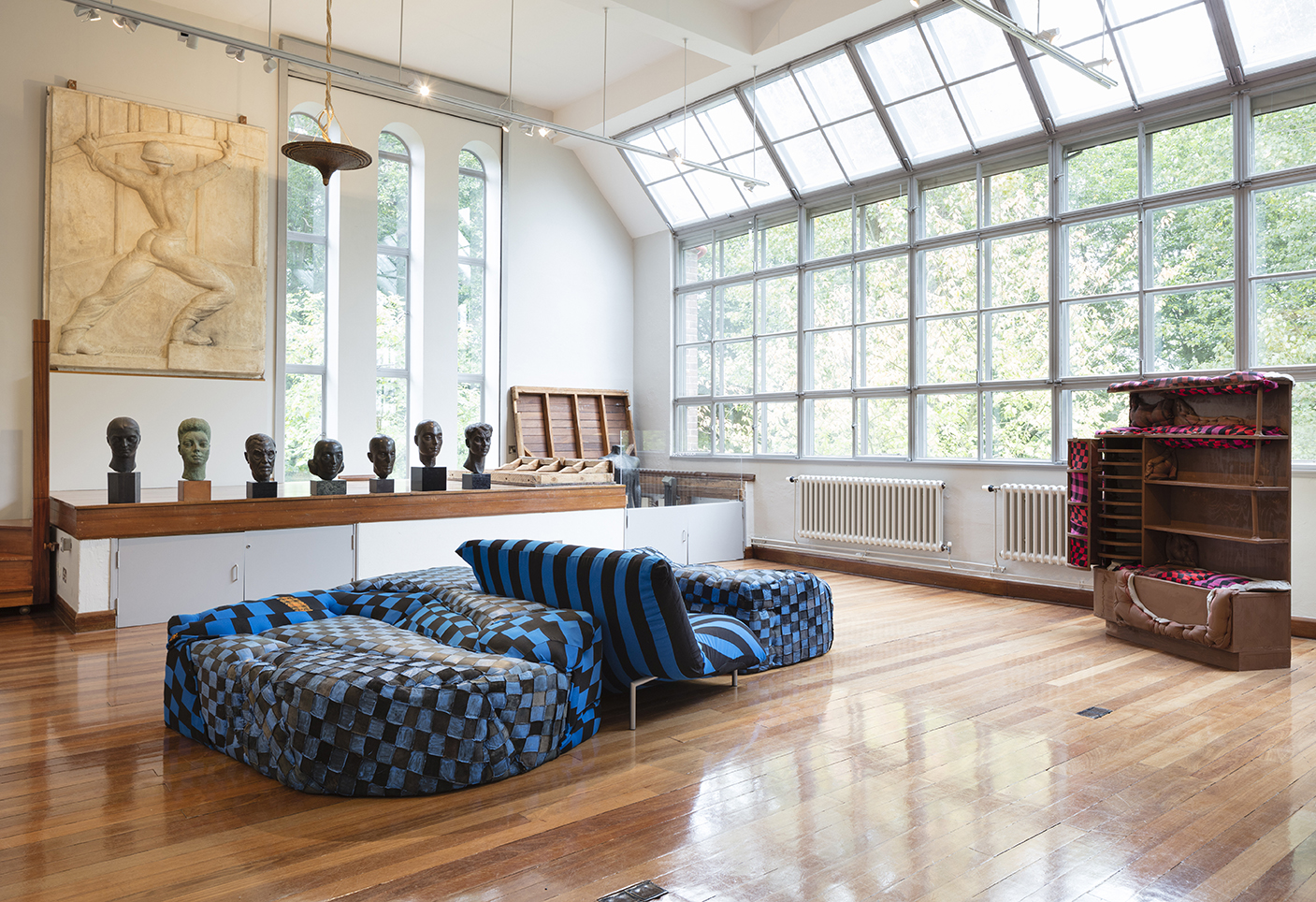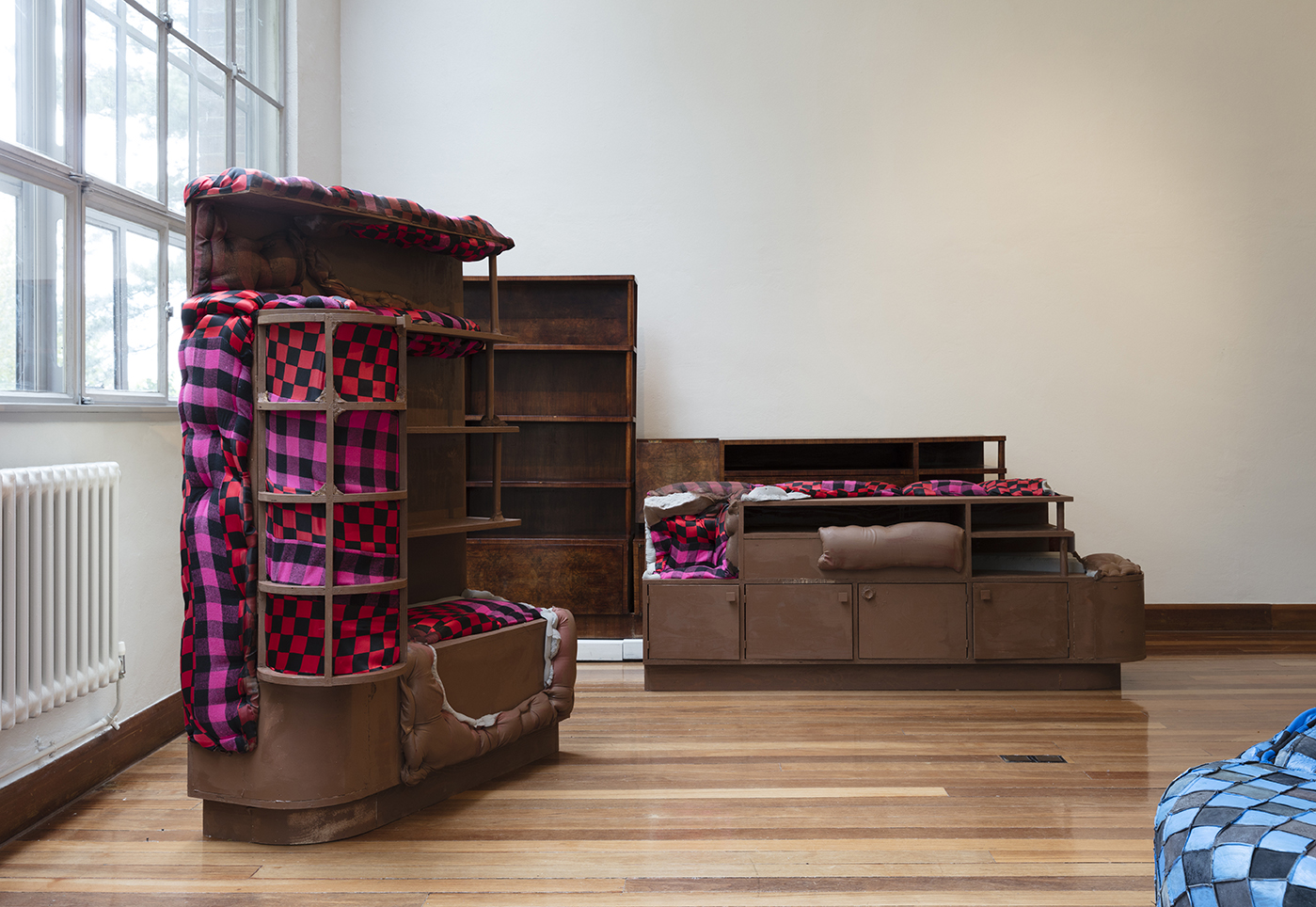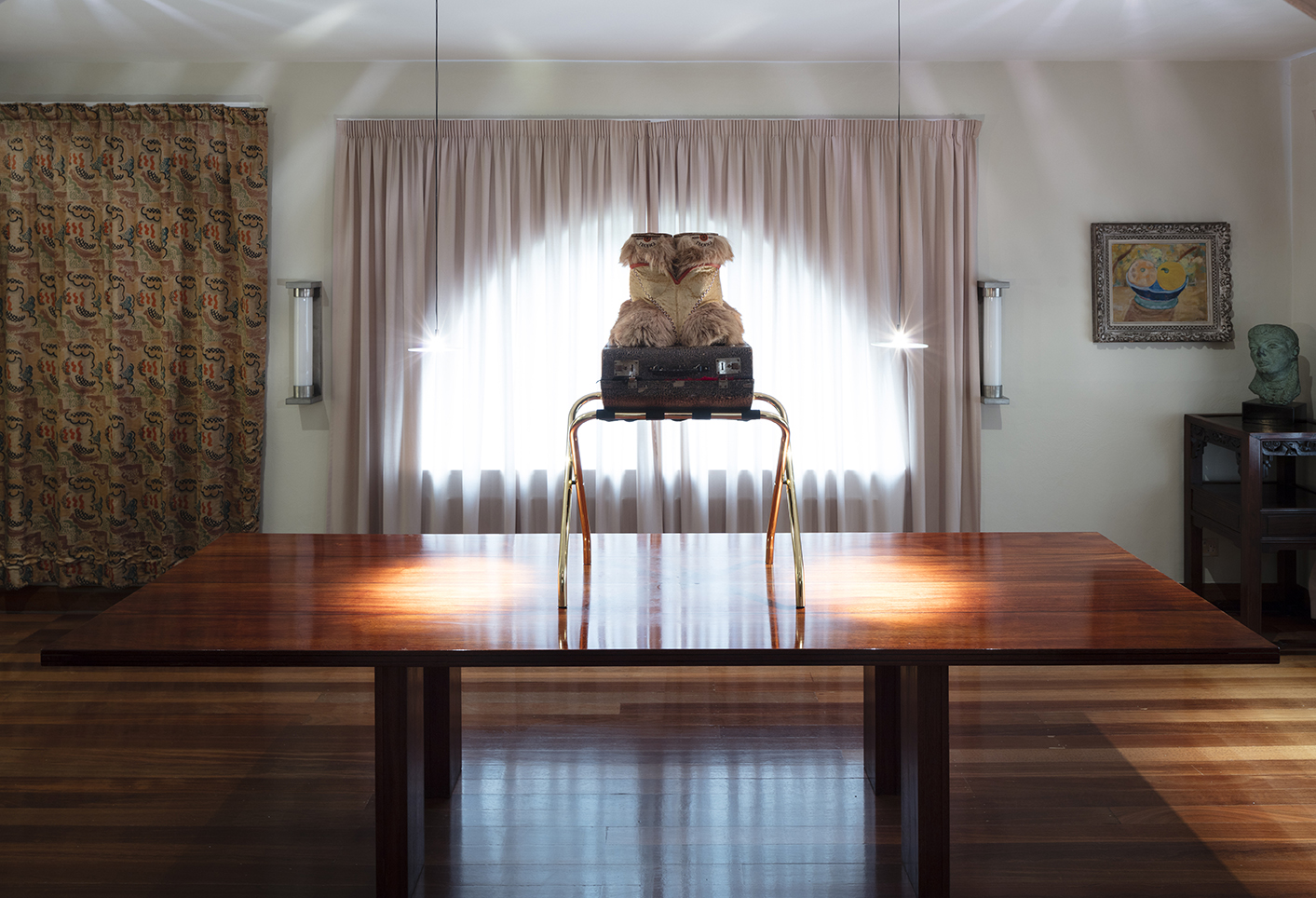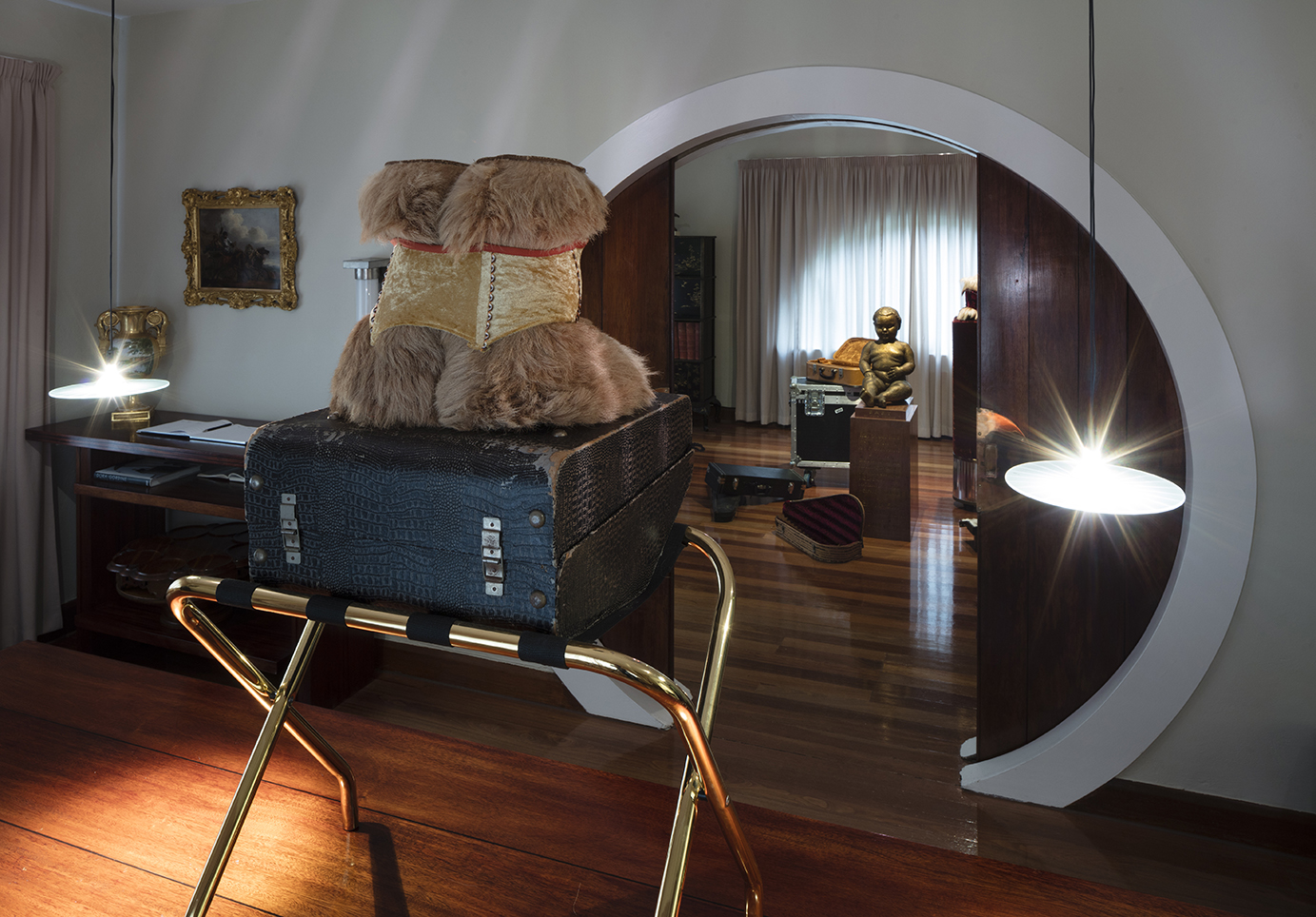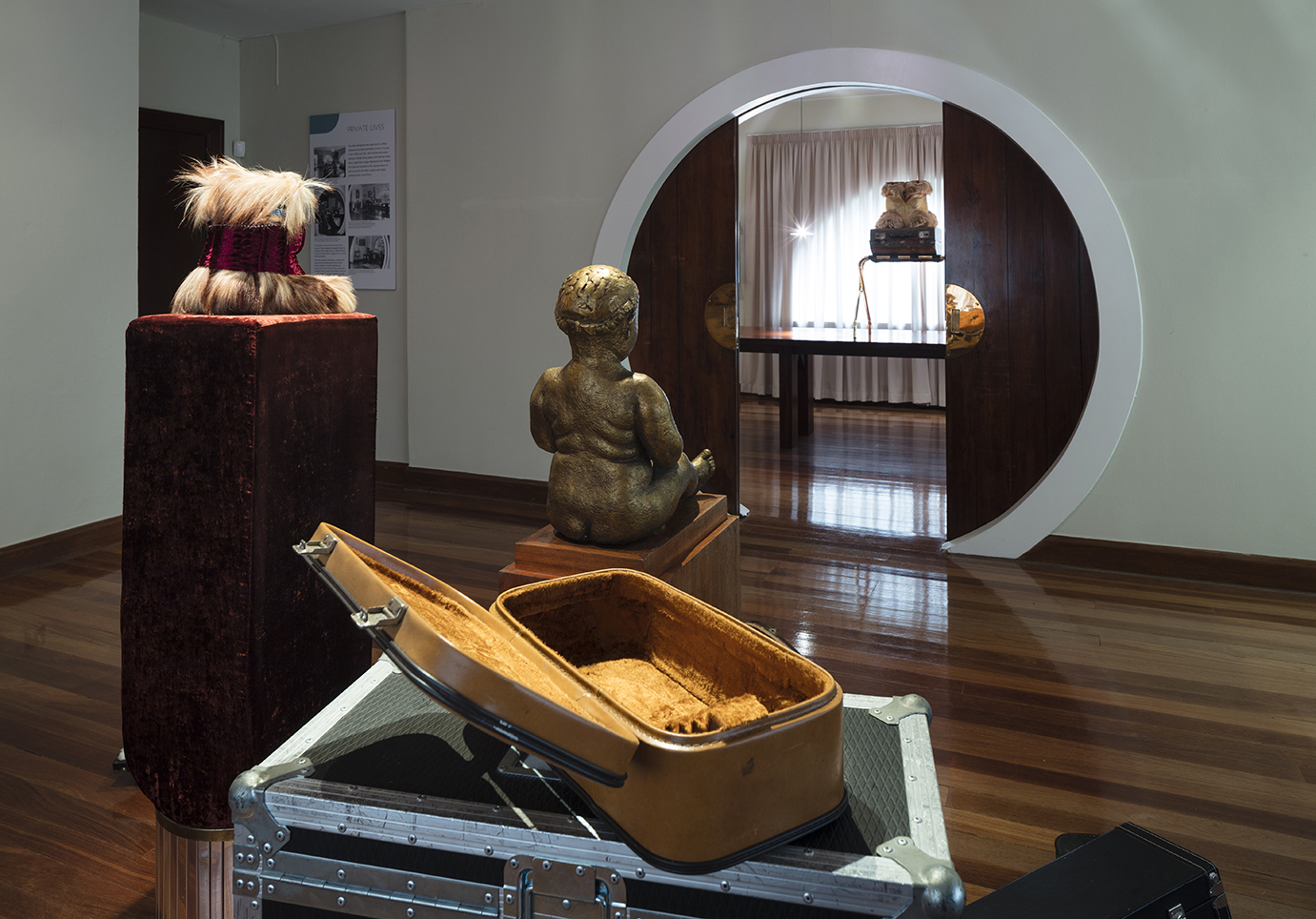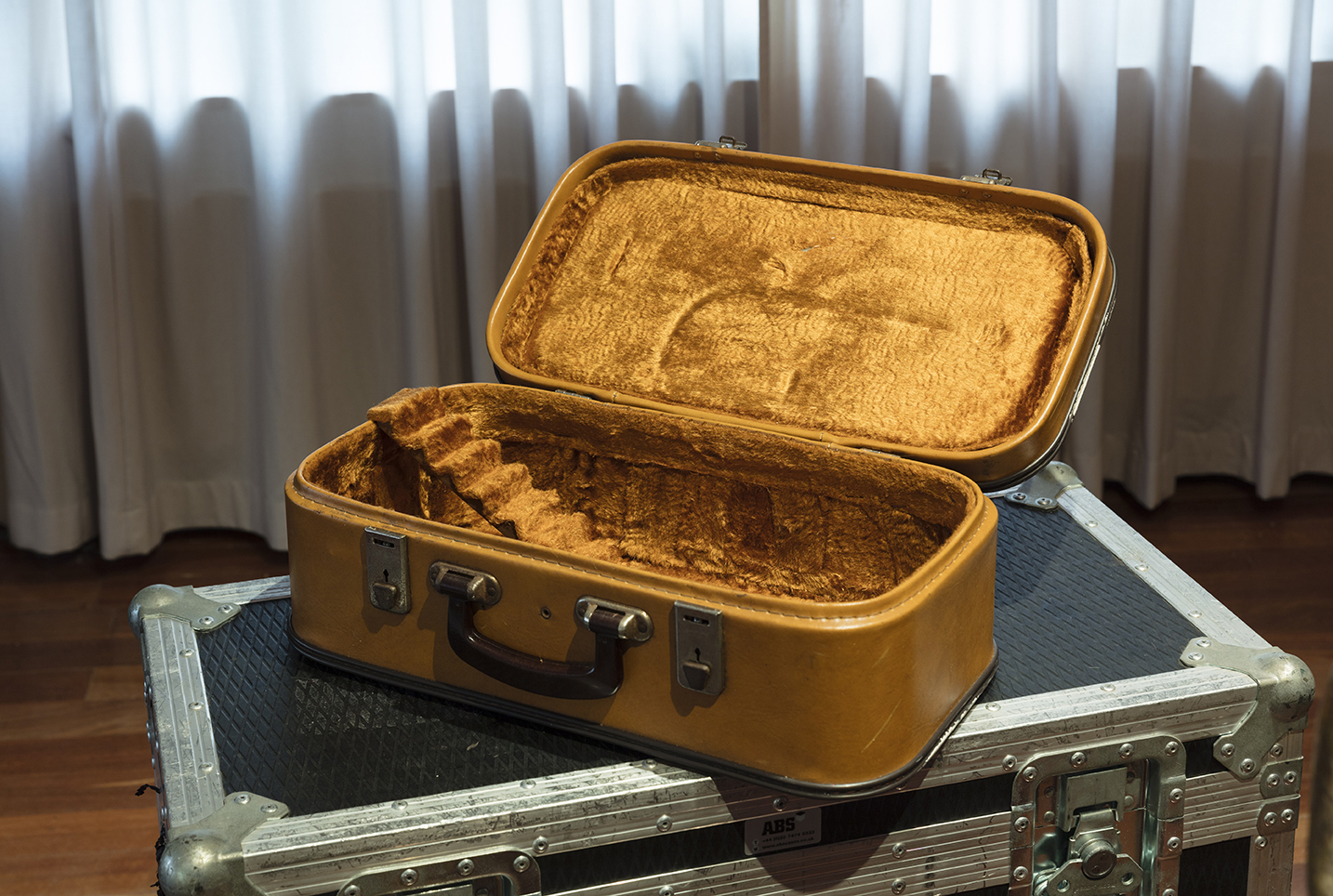31 Candles is an exhibition by American artists Jessi Reaves (b.1986) and Bradley Kronz (b.1986). Commissioned by Stanley Picker Gallery, this new body of work is conceived site-specifically for Dorich House Museum, the Gallery’s partner venue and former studio home of the Russian sculptor, artist and designer Dora Gordine and her husband the Hon. Richard Hare, a scholar of Russian art and literature. The exhibition features new works by Reaves as well as new collaborative sculptures by Reaves & Kronz (Waiting for Boots), presented across four rooms in which the displays of furniture and items from the Museum collection have been partially reconfigured as part of the artists’ intervention.
Jessi Reaves’s sculptures, exhibited in the bright, Richmond Park-facing Modeling Studio, disregard divisions between the functional and the aesthetic. Padded Cabinet (2017) takes a twentieth-century modular shelf unit, which may have been designed by Gordine, as a substrate to be undermined and layered with new meaning as classic craftsmanship and fabrication techniques are challenged and bent towards unintended purposes. At the centre of the room, the three elements forming Java Haunt Ottoman w/ Parked Chair (2017) create a parallel stage to the existing one, upon which a series of bronze heads are lined up, right to the edge. Partly due to their positioning in this room, which indirectly echoes gestures and habits from the House’s past, Reaves’ works are endowed with a sympathetic and welcoming attitude towards the actions they seemingly invite in, whether it be resting or touching the textured finish.
Informed by the tendency to imbue objects with personal meaning, Kronz and Reaves’ artworks populate the Museum with a performative and menacing energy. A new ‘boots’ series sit among Gordine’s figurative bronzes, in the first floor Gallery. Comprising of re-purposed materials, such as stacked flight cases and vintage fur boots, these visual compositions mimic the forms and proportions of the historical statues and their elegant display-plinths. Held together by fabric corsets, the pairs of boots result in collapsed, headless bodies that complement and contrast, equally, with Gordine’s head-portraits. Around the corner, a few battered shoeboxes casually rest on the antique Russian sofa, exposing a sense of relaxed informality in the artist’s use of these once-domestic precious objects.
Ascending to the private and more intimate rooms of the top floor flat, a dramatic shift in atmosphere comes into effect as Reaves and Kronz involve house features, such as curtains and lighting, in the presentation of their works. In the background, Baby (2017), a looped-sound piece, overlays the persistent cry of a small child – a recording taken by Reaves several years ago during a long plane journey – with the seemingly soothing, or perhaps rather exasperating, major chords played by a piano. Five new sculptures orbit Dora Gordine’s Seated Baby (1937-38) in the Living room, one of her early public commission, accompanied by its original plinth. Originally created for the Westminster Council Maternity and Child Welfare Centre and Day Nursery, Pimlico, this work had been in private hands for a number of years until the Museum acquired it in 2016.
Facing the Dining room, Seated Baby is in eye contact with Kronz and Reaves’ Mother Figure (2017), placed on top of the dining table to achieve adult-like height. Making use of the building and its objects as a total display system, Kronz and Reaves’ improvised methods bring an alternative, playful perspective to the scale and nature of the House and its evolution through periods of domesticity, professional work, abandonment and academic use. This is the second iteration of their collaborative project, the first one in the UK.
Jessi Reaves (b. 1986, Portland, Oregon; lives in New York) received her BFA from the Rhode Island School of Design in Providence. Her work has been included in group exhibitions nationally and internationally, in venues including Team Gallery, New York; Swiss Institute, New York; Herald St, London; and A Palazzo Gallery, Brescia, Italy. In 2016, Reaves presented her first solo exhibition with Bridget Donahue, New York, and was most recently included in the 2017 Whitney Biennial.
Bradley Kronz (b. 1986, San Diego, California; lives in New York) received his BFA from The School of The Art Institute of Chicago in Chicago. His work has been included in solo and group exhibitions nationally and internationally, in venues including Matthew Gallery, Berlin; High Art, Paris; A Palazzo Gallery, Brescia, Italy; Essex Street, New York.
Located a ‘Deer’s Leap’ from Richmond Park, Dorich House Museum, one of London hidden gems, is the former studio home of the Russian sculptor, artist and designer Dora Gordine and her husband the Hon. Richard Hare, a scholar of Russian art and literature. Now Grade II listed, the building was completed in 1936, to Gordine’s design, and is an exceptional example of a modern studio house created by a female artist as a space in which to live and work. Following Gordine’s death in 1991, Dorich House was acquired and renovated by Kingston University and is now open to the public as a museum, operating as an international centre to promote and support women creative practitioners. Artist Hilary Lloyd was appointed the inaugural Dorich House Fellow in autumn 2015, with her solo exhibition, Awful Girls presented 8 March – 29 April 2017.
